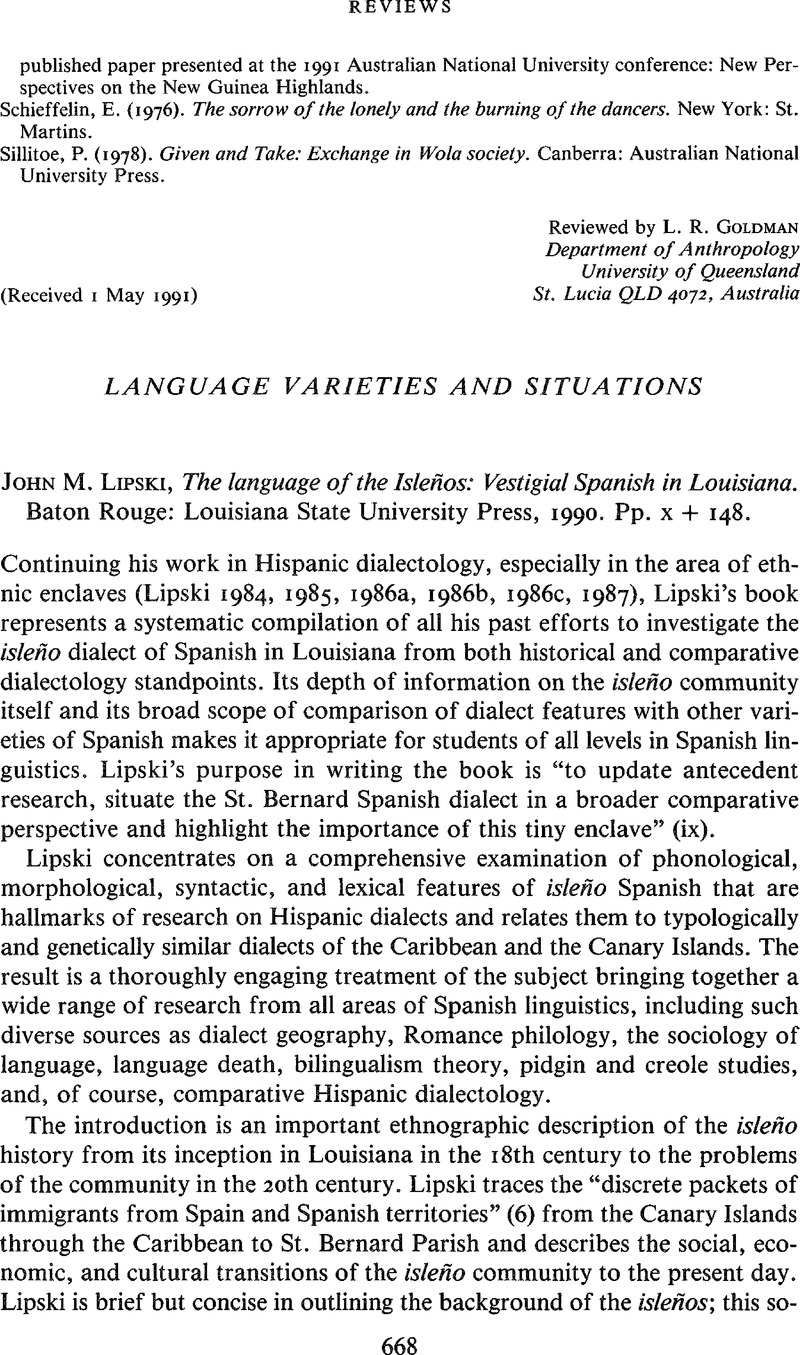Terrell, Tracy D. (
1982). Current trends in the investigation of Cuban and Puerto Rican phonology. In
Amastae, Jon &
Elías-Olivares, Lucía (eds.),
Spanish in the United States: Sociolinguistic aspects.
Cambridge:
Cambridge University Press.
47–
70.
Google Scholar 